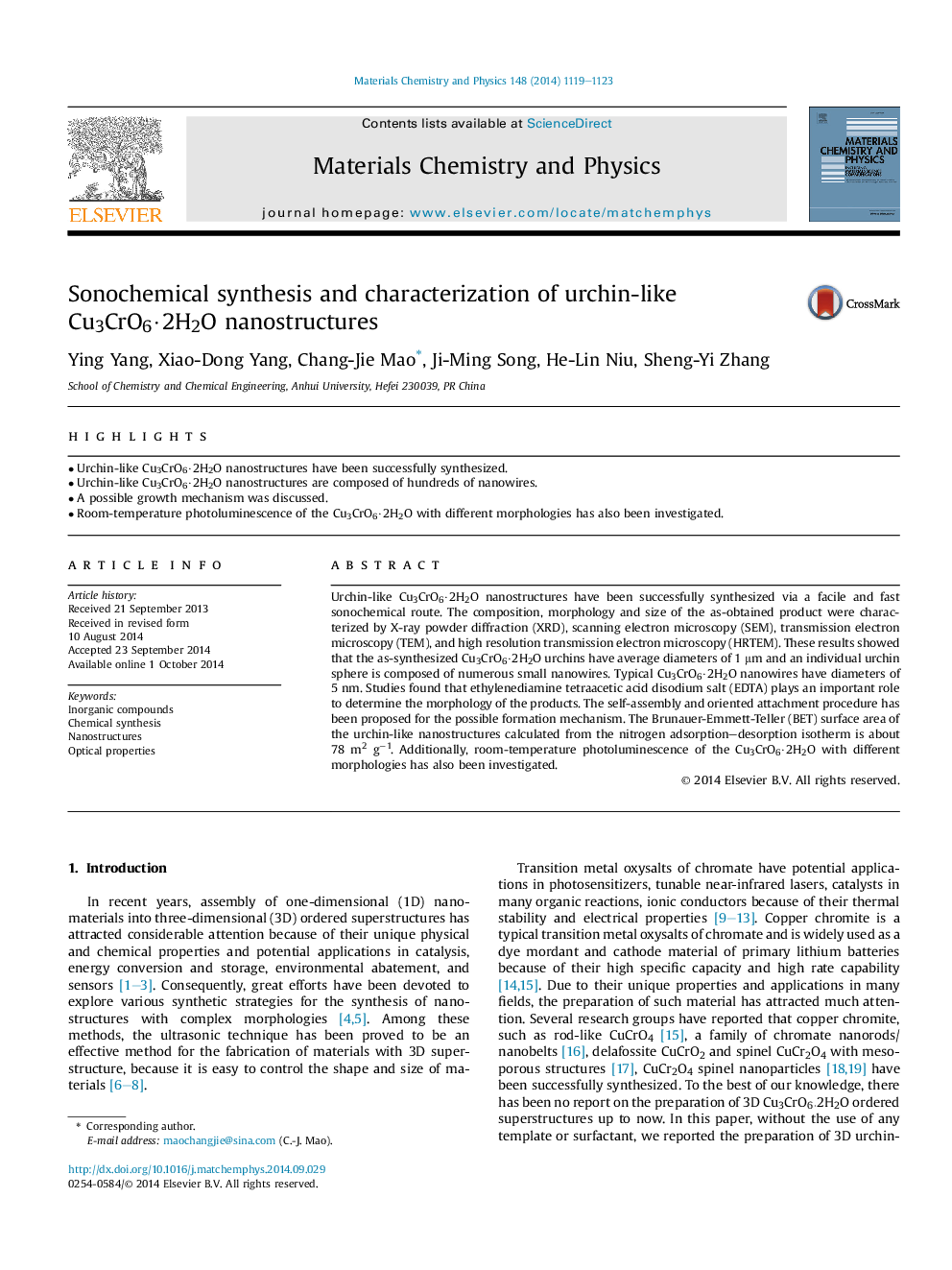| Article ID | Journal | Published Year | Pages | File Type |
|---|---|---|---|---|
| 1521992 | Materials Chemistry and Physics | 2014 | 5 Pages |
•Urchin-like Cu3CrO6·2H2O nanostructures have been successfully synthesized.•Urchin-like Cu3CrO6·2H2O nanostructures are composed of hundreds of nanowires.•A possible growth mechanism was discussed.•Room-temperature photoluminescence of the Cu3CrO6·2H2O with different morphologies has also been investigated.
Urchin-like Cu3CrO6·2H2O nanostructures have been successfully synthesized via a facile and fast sonochemical route. The composition, morphology and size of the as-obtained product were characterized by X-ray powder diffraction (XRD), scanning electron microscopy (SEM), transmission electron microscopy (TEM), and high resolution transmission electron microscopy (HRTEM). These results showed that the as-synthesized Cu3CrO6·2H2O urchins have average diameters of 1 μm and an individual urchin sphere is composed of numerous small nanowires. Typical Cu3CrO6·2H2O nanowires have diameters of 5 nm. Studies found that ethylenediamine tetraacetic acid disodium salt (EDTA) plays an important role to determine the morphology of the products. The self-assembly and oriented attachment procedure has been proposed for the possible formation mechanism. The Brunauer-Emmett-Teller (BET) surface area of the urchin-like nanostructures calculated from the nitrogen adsorption–desorption isotherm is about 78 m2 g−1. Additionally, room-temperature photoluminescence of the Cu3CrO6·2H2O with different morphologies has also been investigated.
